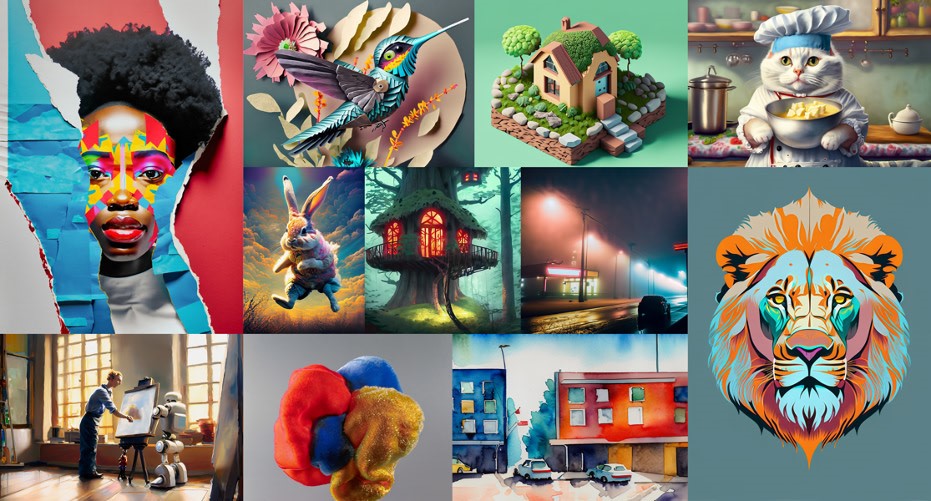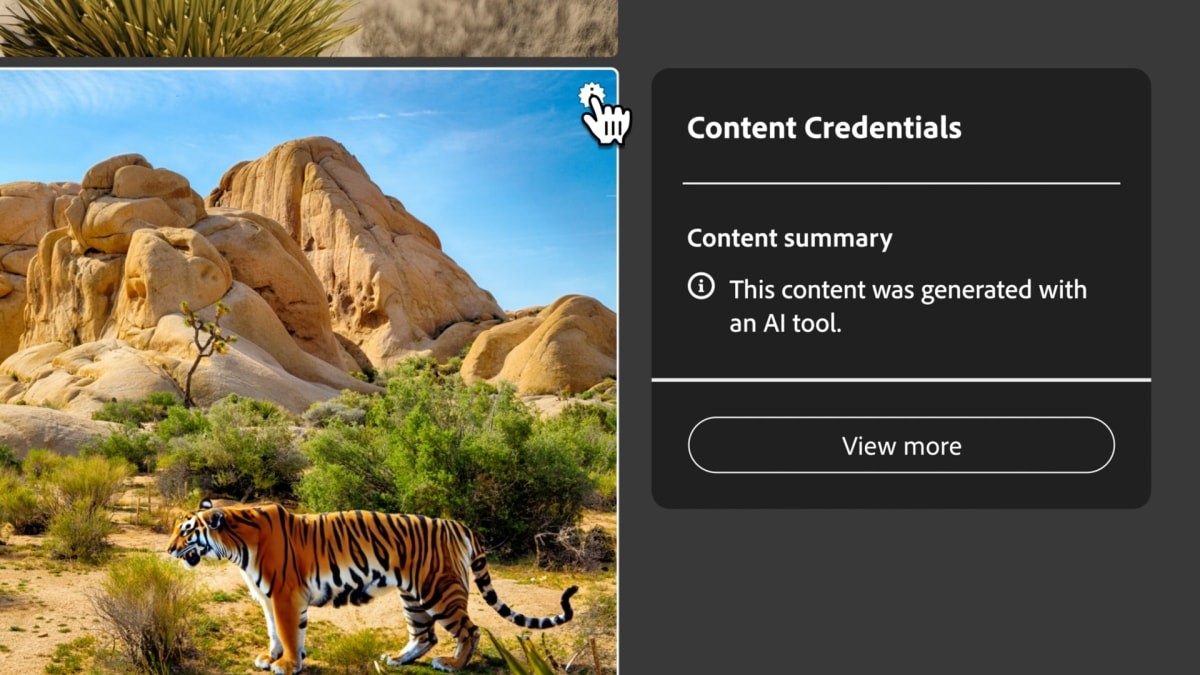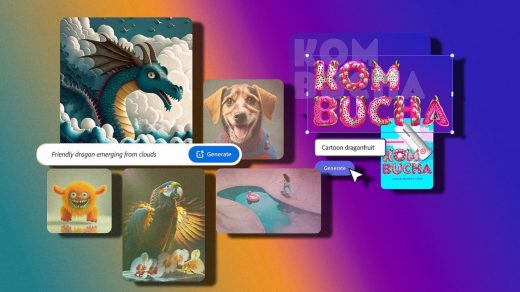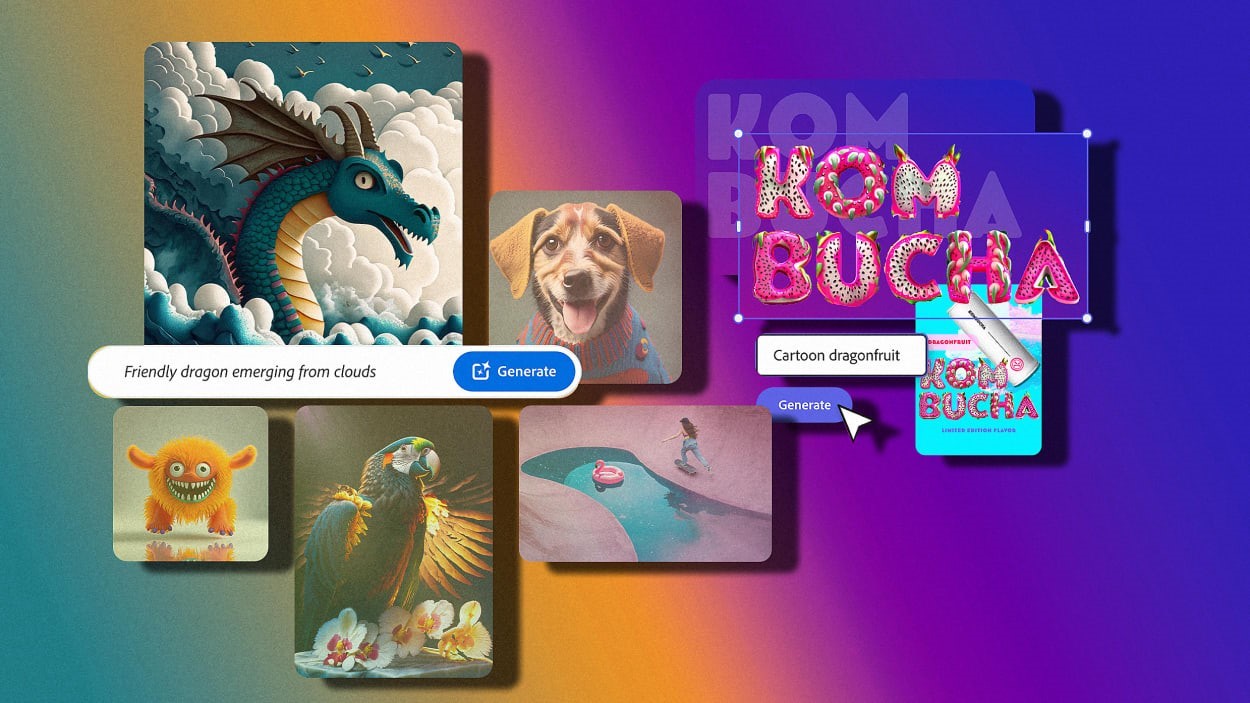As Firefly leaves beta, Adobe promises bonuses to creators who trained its AI
Since launching in March, after a 2-month development blitz, Adobe’s generative AI platform Firefly has dreamed up 2 billion images. And today, the platform is leaving beta to further incorporate image generation into Photoshop, Illustrator, and the software of the Adobe Creative Cloud.
With the announcement came several updates as to how Adobe will charge users for using Firefly, compensate its own creators, and juggle AI content in its own stock imagery. Here are the updates:

Firefly will let you generate up to 3,000 images a month
As Firefly becomes an official part of Adobe’s software, the company needs to introduce AI to its business model. Image generation requires a lot of (costly) processing power, and so Adobe is putting a soft limit on how many images its subscribers can generate, which varies by subscription. Free users will be able to create up to 25 a month. People who subscribe to one Creative Cloud app (like Illustrator or Premiere Pro) will be able to create 500. Full Creative Cloud subscribers will get 1,000 across apps. Creative Cloud Pro subscribers will get 3,000.
If you go over your limit, you will be able to generate images at a slower-processing speed on larger plans—but those subscribing to Stock, Express, or Firefly alone will be limited to two generated images per day. More credits will be available for purchase at an undisclosed price.
Adobe will pay a one-time bonus to some Adobe Stock creators
While Adobe only trained Firefly on licensed imagery, like its own collection of 300 million images and illustrations in Adobe Stock, many artists were still left with a sour taste in their mouth. They (reasonably) complained that their original work was used to train a machine that was now their competition.
In response, Adobe has announced a “Firefly Contributor Bonus,” meaning the company will be paying a one-time fee to Adobe Stock creators whose work trained Firefly.
“This initial bonus, which will be different for each contributor, is based on the all-time total number of approved images submitted to Adobe Stock that were used for Firefly training, and the number of licenses that those images generated in the 12-month period between June, 2022, to June 2, 2023,” according to the press release.
Adobe declined to offer any further indication to Fast Company regarding how much this bonus might actually be, or how much it might range from person to person. What does seem more certain is that Adobe plans to pay out such a bonus yearly for any new Adobe Stock imagery used to train Firefly.

Adobe opens the floodgates to AI Stock imagery, but promises to get best practices in check
Whereas its competitors like Getty and Shutterstock don’t allow AI-created stock imagery, Adobe Stock has already been accepting it for an unspecified amount of time, and it requires that contributors label the content as such. Today, Adobe officially announced that it will allow also AI-generated media from its own platform, Firefly, into Stock.
As part of the release, Adobe is promising that it is increasing its moderation of the Adobe Stock library, and it will “be more effective” at preventing people from searching the database using artist names to find look-alike, knockoff illustrations and other media created by AI in their style. This is not a trivial point, as it represents one of the greatest criticisms of Adobe’s AI efforts at large.
How well Adobe actually polices Adobe Stock, and how much it actually compensates its creators for training Firefly, will do much to define the company’s legacy regarding AI. And it could do a lot to determine how creatives make their livelihood in the future.
But while Adobe was slow to launch Firefly, one thing is clear now: It’s actively pushing its own business model and community to embrace a deeper level of automation and a fuzzy new meaning of authorship.
(5)



